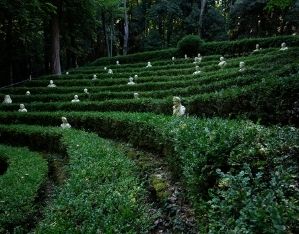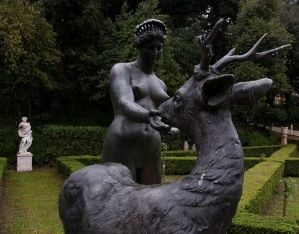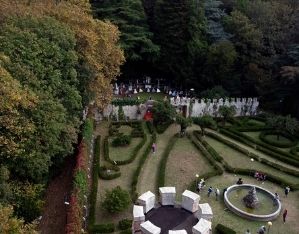These gardens spread over 17 hectares on the slopes of Mount Marzano. Built between the 18th and 19th centuries, they predominantly resemble a forest, criss-crossed by straight avenues with some formally-planted areas, enriched by precious elements, not least a very special open-air theatre.
The della Valva family, of Norman extraction, dates all the way back to the start of the second millennium. The tower later incorporated into the villa, known as the Castle, dates back to this period, although it was only at the end of the 18th century that Marquis Giuseppe Maria Valva built the residence as a holiday home next to the existing medieval building. The Marquis lavished his greatest efforts, however, on creating the gardens, hiring the finest gardeners and botanists in the Kingdom: magnolias, cedars, firs and plane trees planted in the 19th century stand out against thecontinuum of the coppice wood (mainly, holm oaks, chestnut trees and maples). The woodland is set within the overall layout through formal elements of great value, including two “Italian-style” gardens, orchards, small neoclassical or medieval style architectural elements, fishponds, a small lake (no longer visible), extensive statuary, caves and the spectacular “teatro di verzura” open-air theatre. In 1831, the residence passed to the d’Ayala family, which had close links with the Sovereign Military Order of Malta. It was to this organization that the family left the property in a 1959 bequest. The gardens we see today are the result of continuous renovations and enrichments by the Valva and d’Ayala families. The most significant period for this work spanned the 1700s and 1800s, although it was later, around 1867, that the villa gained new splendour as a result of work commissioned by Marquis Francesco d’Ayala-Valva.




